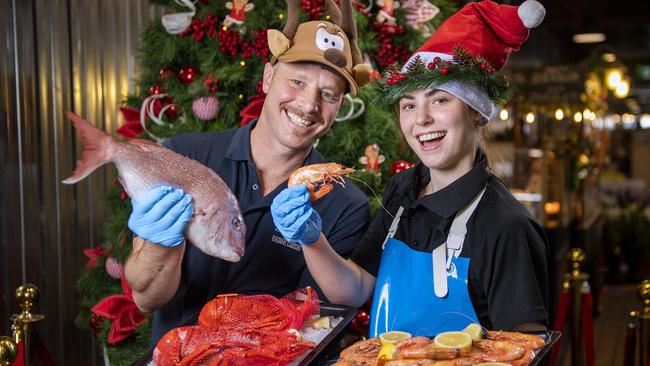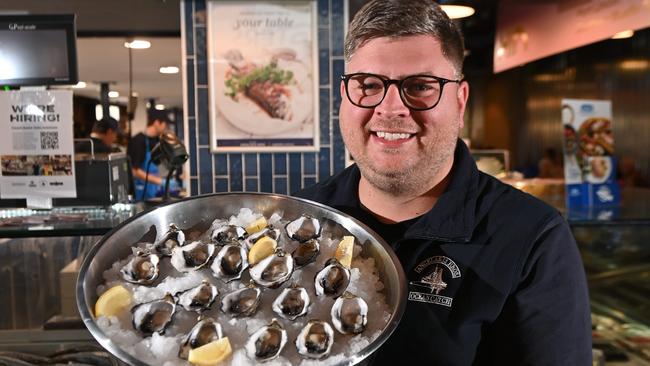Slow catch rates of Christmas seafood favourites lead to price rise for SA families
Prices of many popular seafoods, including much-loved lobster, are on the rise and may be out of reach for many this Christmas. Here’s why and what you can do.
SA News
Don't miss out on the headlines from SA News. Followed categories will be added to My News.
Families keen to have a luxurious lobster for Christmas lunch or prawns on the barbie are facing an increase in prices – but there are still plenty of cheaper alternatives.
A slower catch rate of festive favourites as fishers wait for China trade to resume means prices have slowly risen and lobster is selling for around $100/kg.
Extra large South Australian king prawns are selling for just under $40/kg.
“Crayfish has gone up slightly from previous years … it’s very much supply and demand and it’s a little bit the same with prawns,” Angelakis Bros owner Alex Knoll said.
“There hasn’t been an abundance of catch rate coming through – there’s product out there, but there isn’t an oversupply.
“There will be enough for Christmas, but it does affect the price.”

Fishers are waiting for a four-year ban on live lobster exports to China to lift by the end of the year, likely to lead to a further price rise.
The Advertiser can reveal federal government representatives last week visited China to ensure the resumption of trade continued as planned.
It was understood the Chinese trade minister confirmed the agreed timeline was on track – which was ahead of the Lunar New Year on January 29.
Mr Knoll said for people more price conscious this Christmas, tips included buying smaller crustaceans and opting to cook whole fish, rather than fillets.
“Rather than getting a big 2kg crayfish at the top end of the price, get a couple of smaller ones which are cheaper but still the same quality,” Mr Knoll said.
“For prawns, the smaller ones are sweeter and are at a better price point, but it does mean you’ll have to peel a few more but the quality is as good as the large ones.

“If buying whole cooked prawns are too expensive, there’s plenty of prawn cutlets and prawn meat to do garlic prawns as an alternative.
“In terms of whole fish, baby barramundi is popular and you can do it in the oven or barbecue.”
King George whiting prices were around $90-100/kg due to catch rates being 30 per cent down, Mr Knoll said, but garfish, Coorong mullet, mulloway and snapper were in abundance.
“There are some better price point fish out there, but you may have to compromise a little bit and get something more available.”
Trade Minister Don Farrell said he “remained confident” the exports of Australian rock lobster, worth about $700m a year, would resume within the agreed time frame.
“I understand the impact of not having access to the Chinese market has had on our lobster industry, and I thank them for their ongoing patience and resilience through this process,” Mr Farrell said.
Up to 95 per cent of South Australia’s rock lobster experts were sent to China before the ban, which when imposed saw prices plummet from $130/kg to as low as $40/kg.
Fishers have remained optimistic the ban would soon be lifted, after restrictions against beef, hay and wine and have gradually lifted over the past year.
Originally published as Slow catch rates of Christmas seafood favourites lead to price rise for SA families



